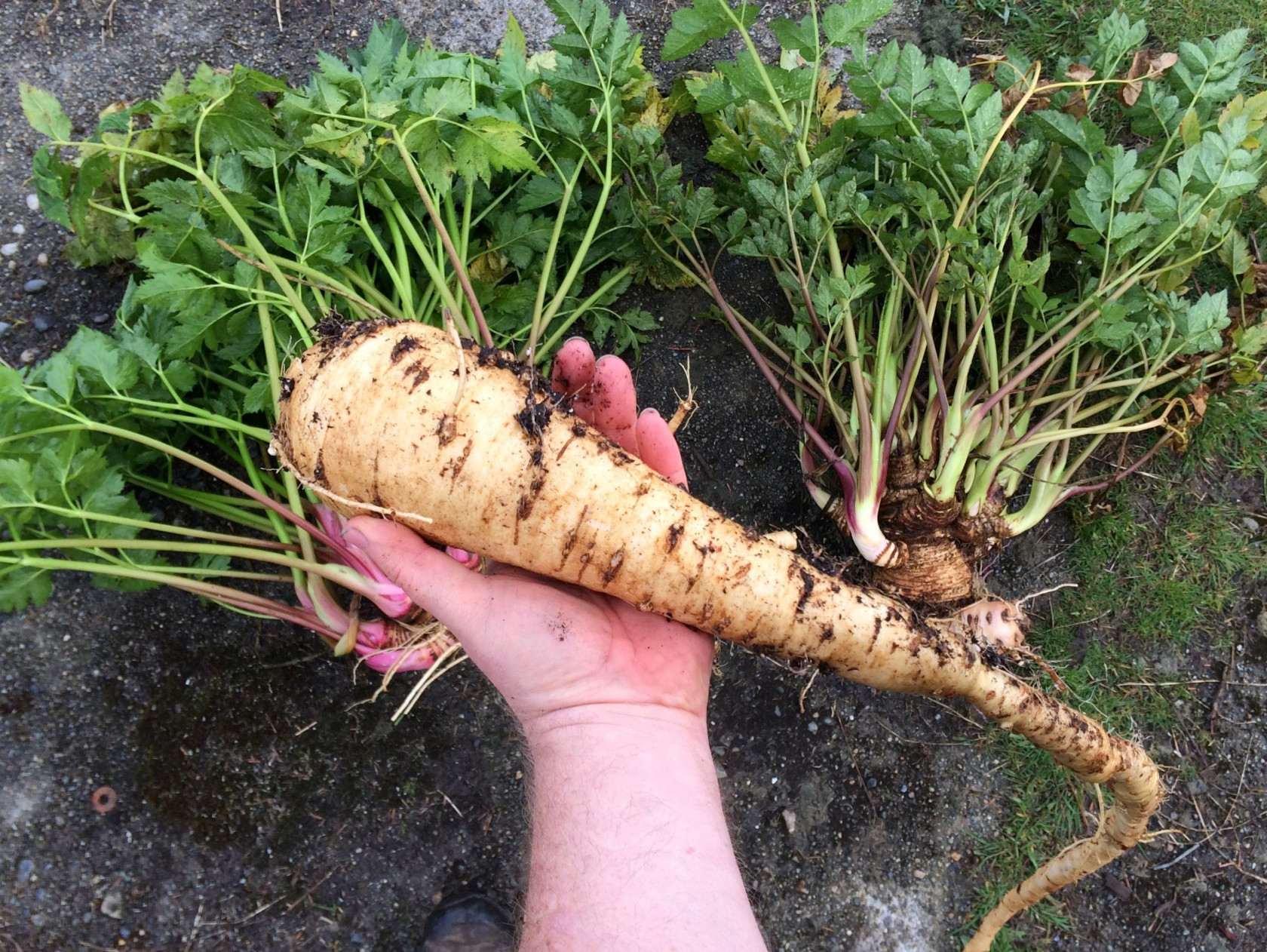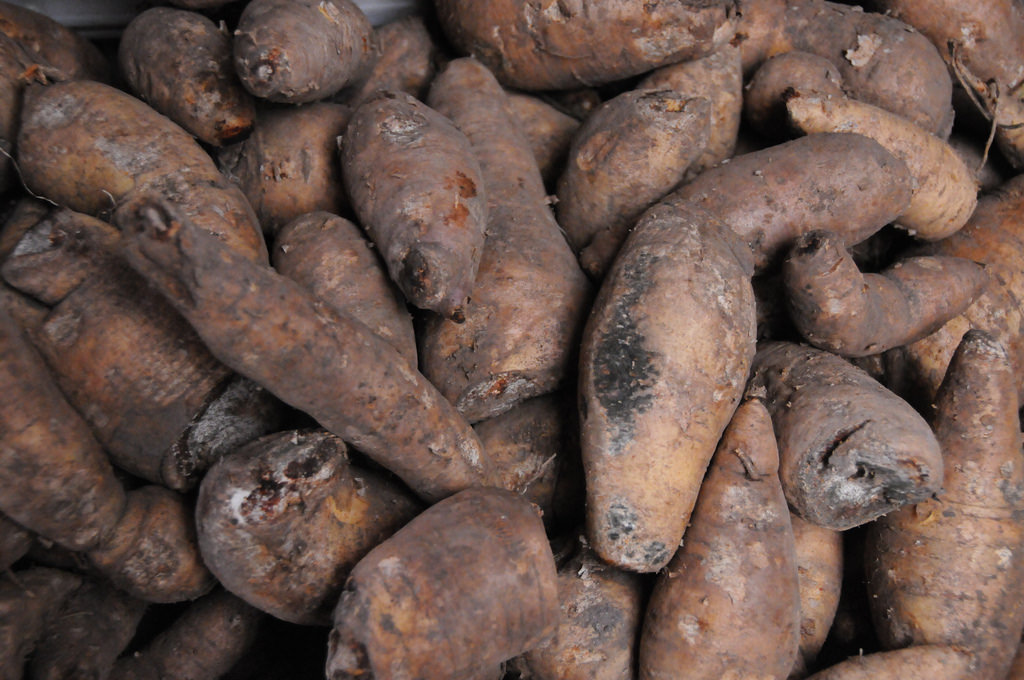Racacha
 Common names: Racacha, peruvian carrot, peruvian parsnip, white carrot
Common names: Racacha, peruvian carrot, peruvian parsnip, white carrot
Scientific name: Arracacia xanthorriza
Climate: Temperate, cold
Plant description: It is a tuber belonging to the family of umbelliferous plants.
The plant can grow up to 90 cm and be just as wide.
The stem of the arracacha is green and smooth, with purple veins. The stems and leaves are also similar to those of celery, although the stems are not as thick as those of celery.
Its leaves measure 10 and 20 cm and also resemble parsley leaves. Its flowers are oval brown.
The roots of the arracacha have smooth and shiny skin; they are robust and white, with an almost identical appearance to carrots. The internal color of the tuber can vary between white, yellow, and purple, generally white.
Its flavor is between carrot and celery.
It is a native species of the Andean region, it grows from Venezuela to the north of Chile.
Cultivation: Traditional cultivation is done by sowing the sprouts or deviations that grow from the main tubers, although it can also be easily grown through seeds.
To multiply by cuttings, a thick branch is cut taking care to cut below at least two rings so that the bud can stick, the leaves are removed leaving the stake of about 25 cm. When cutting, it is suggested to apply a little aloe vera to avoid diseases. It is sown as 2 cm and that's it.
The arracacha can be planted at any time of the year, but it is generally planted during the beginning of spring to take advantage of the first rains.
It requires moderate watering. It is drought tolerant, but drought can force the plant into a reproductive mode. They like well-drained soils, even sandy ones.
It is a perennial plant, the top dies during the winter, but the plant will return year after year as long as the ground does not freeze. It grows from the subtropical elevations of the Andes up to 3200m.
It takes about a year and a half to bear fruit. When the fruits are ready, they rise a little from the ground.
 Uses: All parts of the plant are edible, although the roots are the most commonly consumed. It is considered subsistence agriculture since it is a starchy root with a high energy content (more than 100 calories in 100g), a single plant can give 3 kg of root and 3,270 calories.
Uses: All parts of the plant are edible, although the roots are the most commonly consumed. It is considered subsistence agriculture since it is a starchy root with a high energy content (more than 100 calories in 100g), a single plant can give 3 kg of root and 3,270 calories.
It has a high nutritional value, contains high values of Ca, Mg, P, Fe, ascorbic acid, and vitamins A and C, it is also a good antioxidant, strengthens the immune system, and is easy to digest.
Plagues and diseases: Slugs, snails, earwigs, and voles are its enemies. The Erwinia carotovora bacteria is a root-rotting disease.
References:
Arracacha (Aracacia xanthorrhiza) - The Cultivariable Growing Guide. (2020, May 26). Cultivariable. https://www.cultivariable.com/instructions/andean-roots-tubers/how-to-grow-arracacha/#description
C. (2011, April 27). Arracacha. CooksInfo. https://www.cooksinfo.com/arracacha
Know your Arracacha - Know your Vegetables. (n.d.). Know Your Vegetables. Retrieved August 15, 2020, from https://www.sites.google.com/site/knowyourvegetables/know-your-arracacha
L. (2019, November 10). Arracacha - Propiedades, Beneficios, Valor Nutricional, Origen, Sabor. TUBÉRCULOS. https://www.tuberculos.org/arracacha/
Proyecto Cultivos Urbanos. (2019, November 27). Cómo sacar nuevas plantas de Arracacha en la huerta Casera. YouTube. https://www.youtube.com/watch?v=m16pEROJK94
En español: Arracacha
